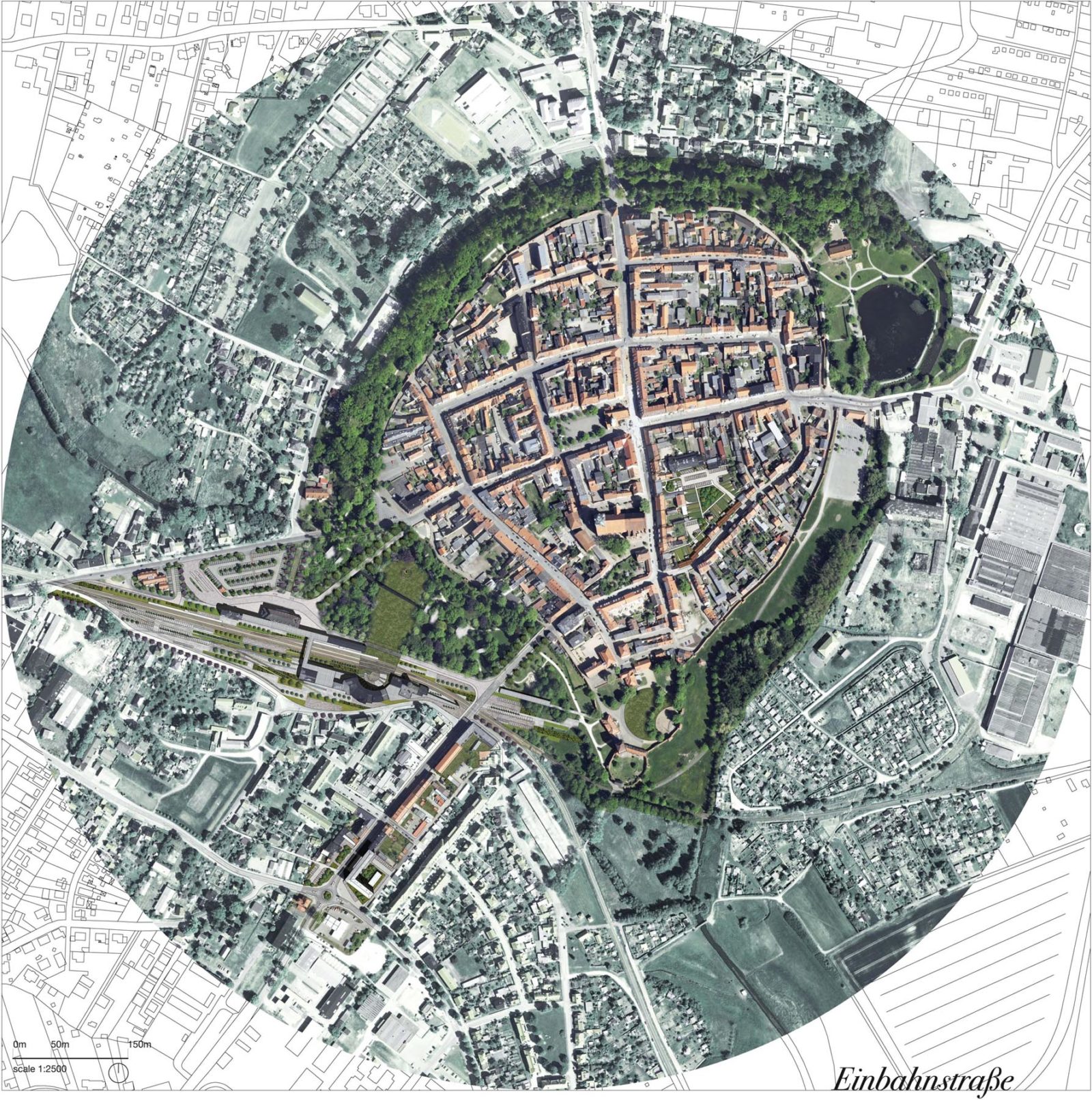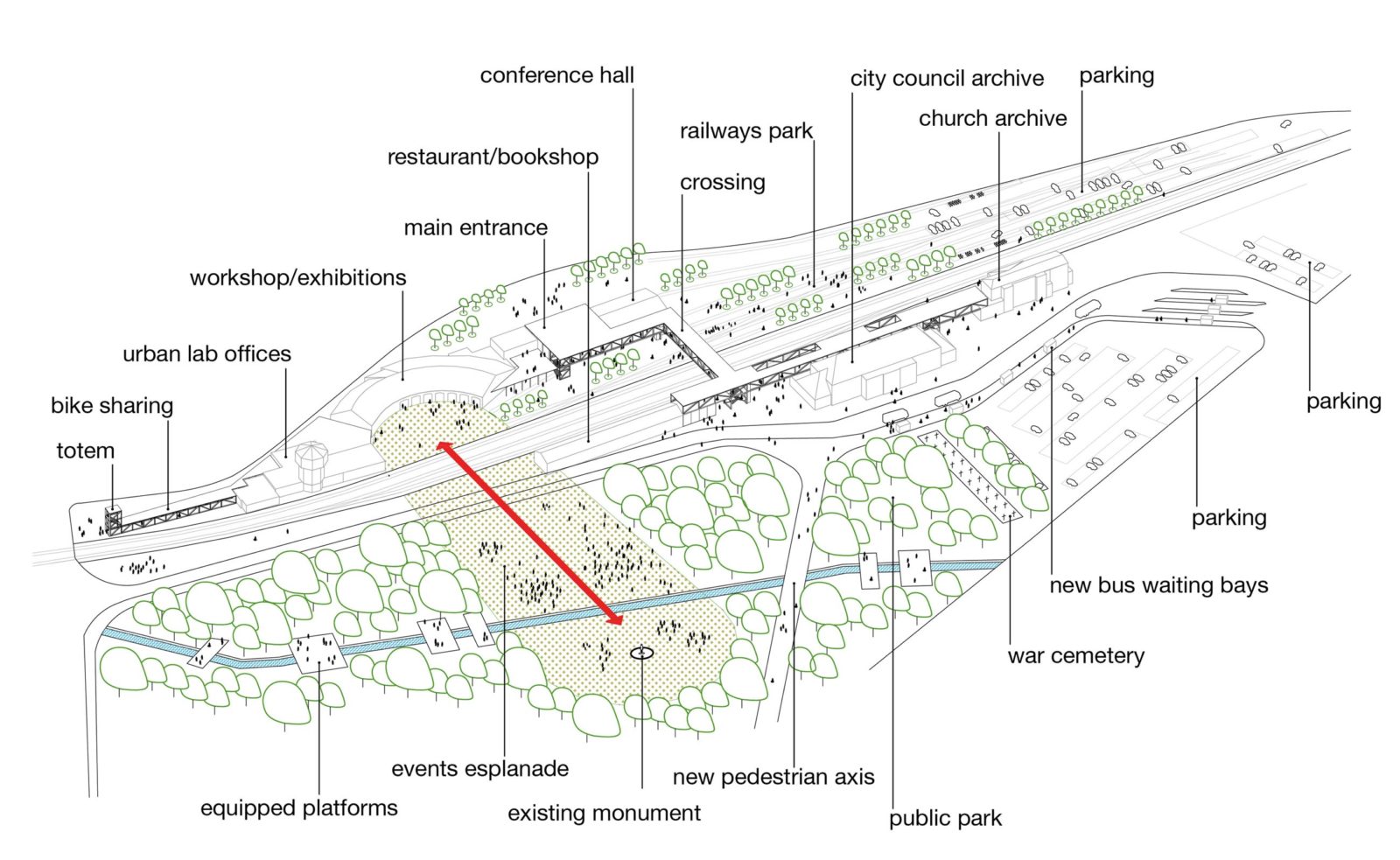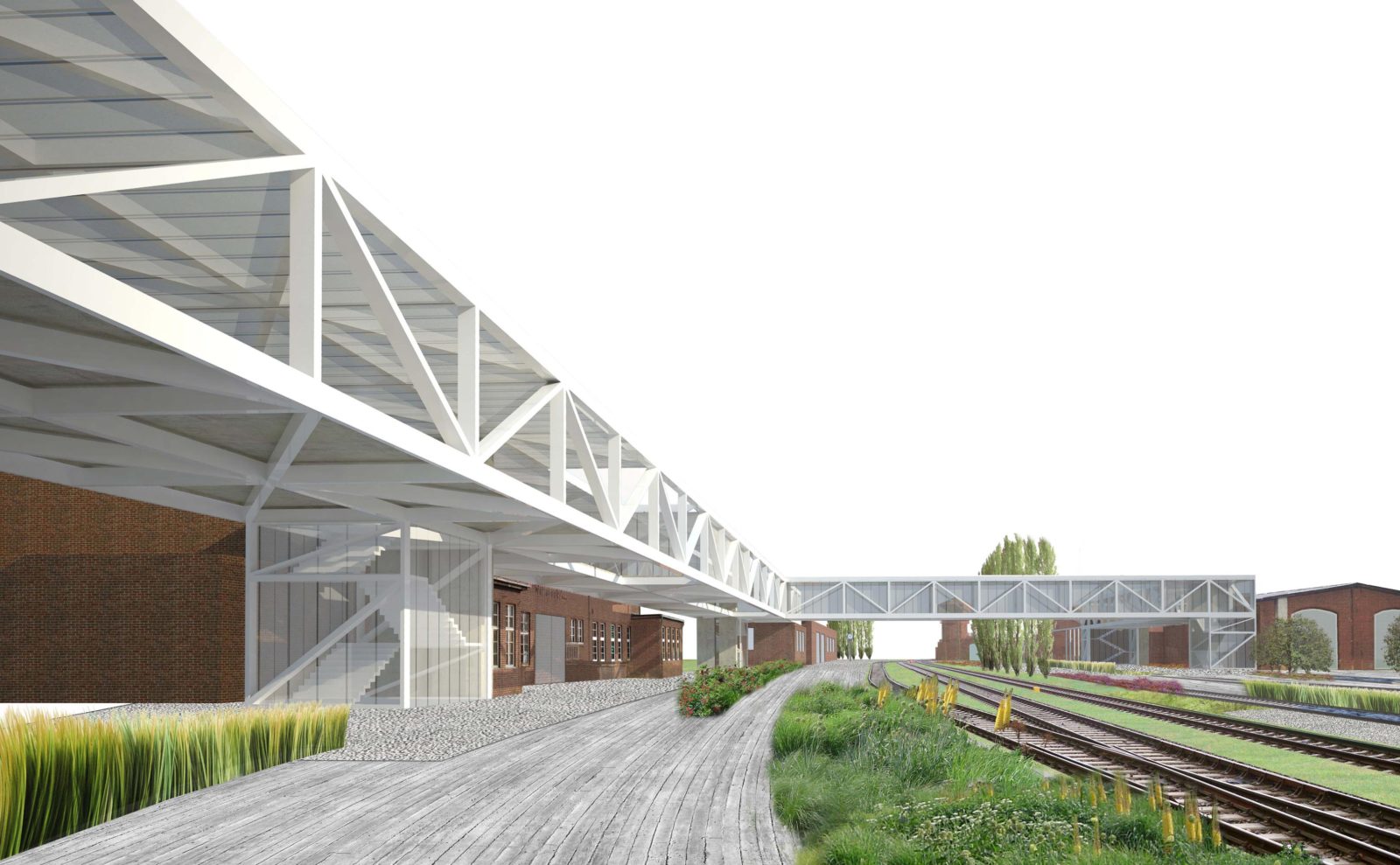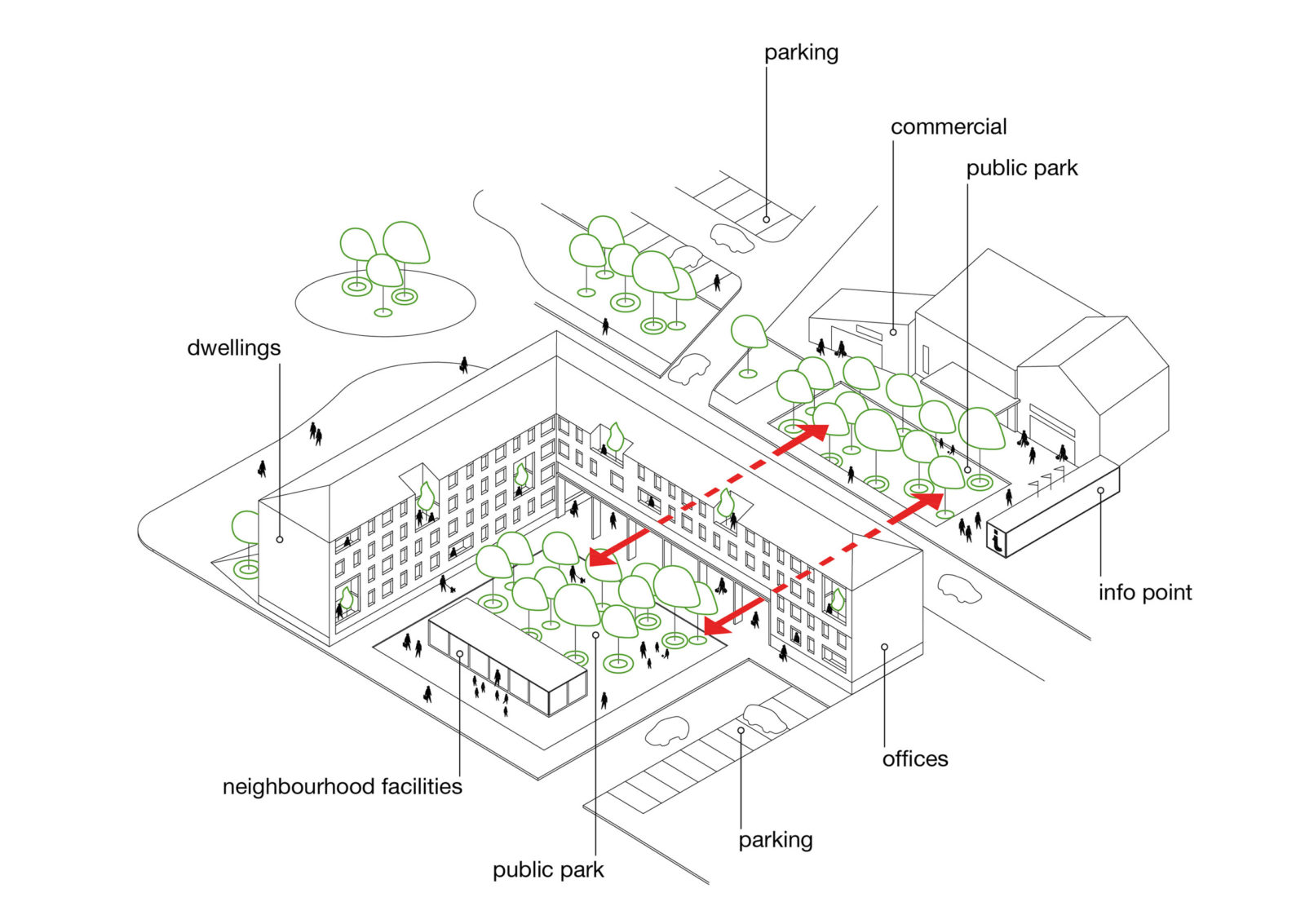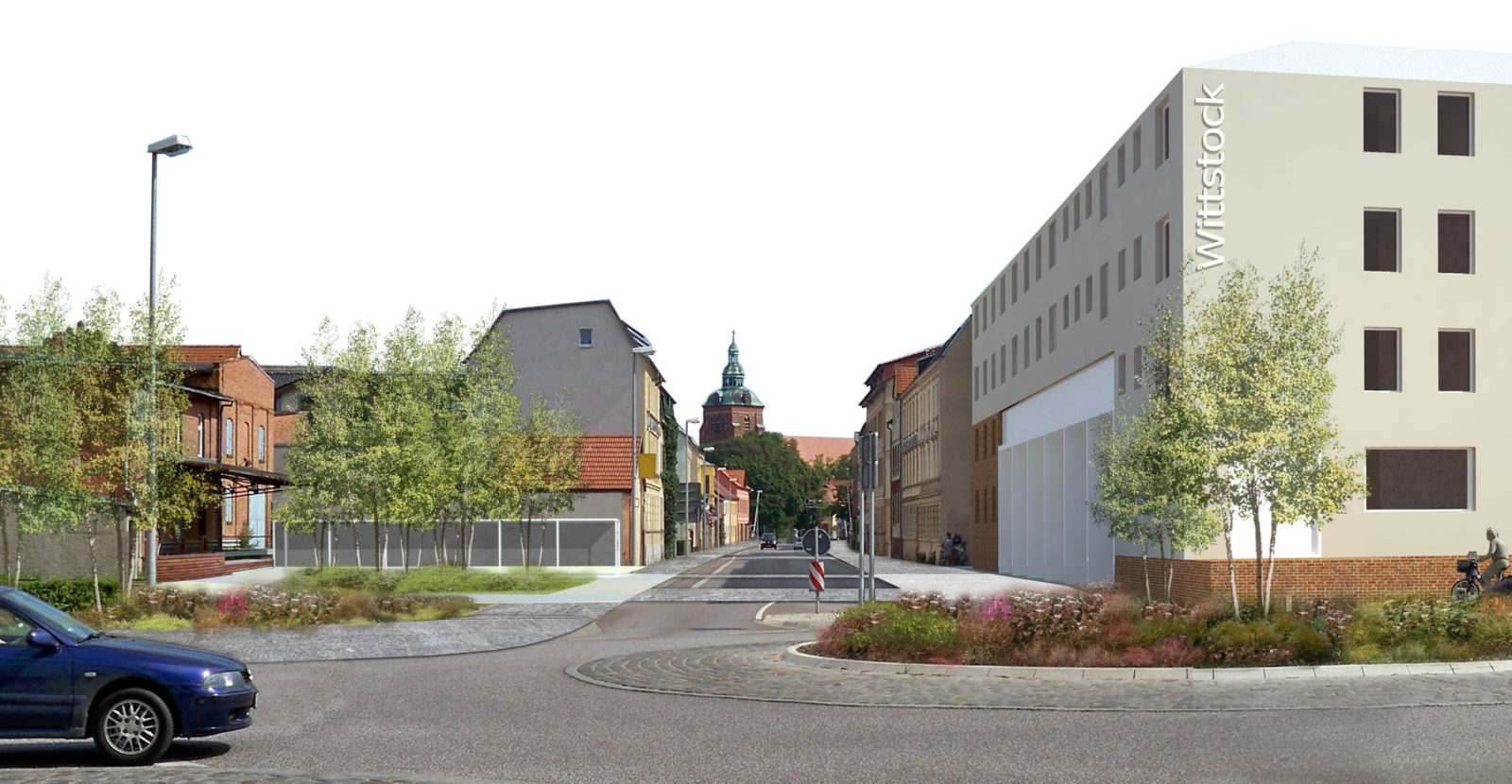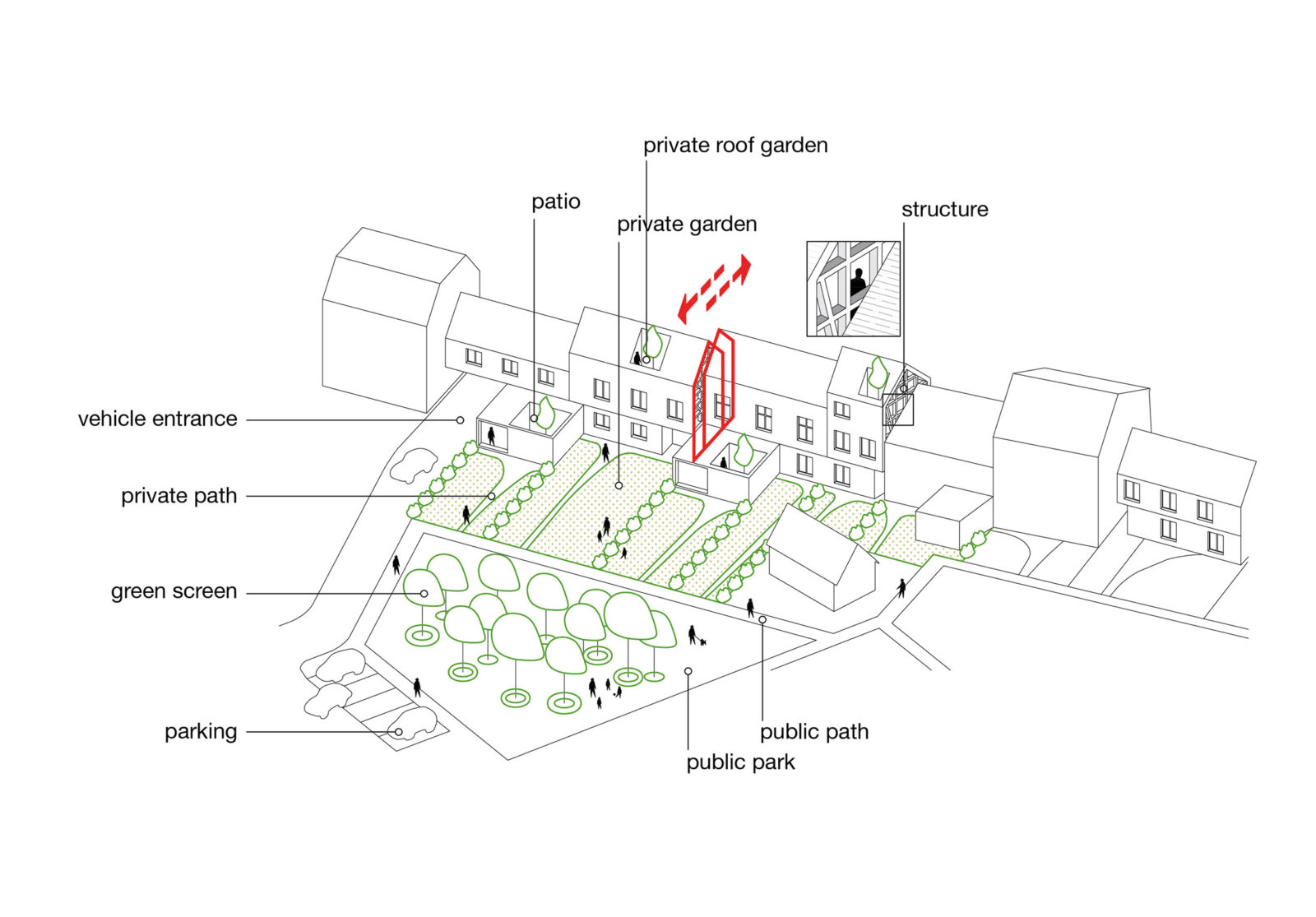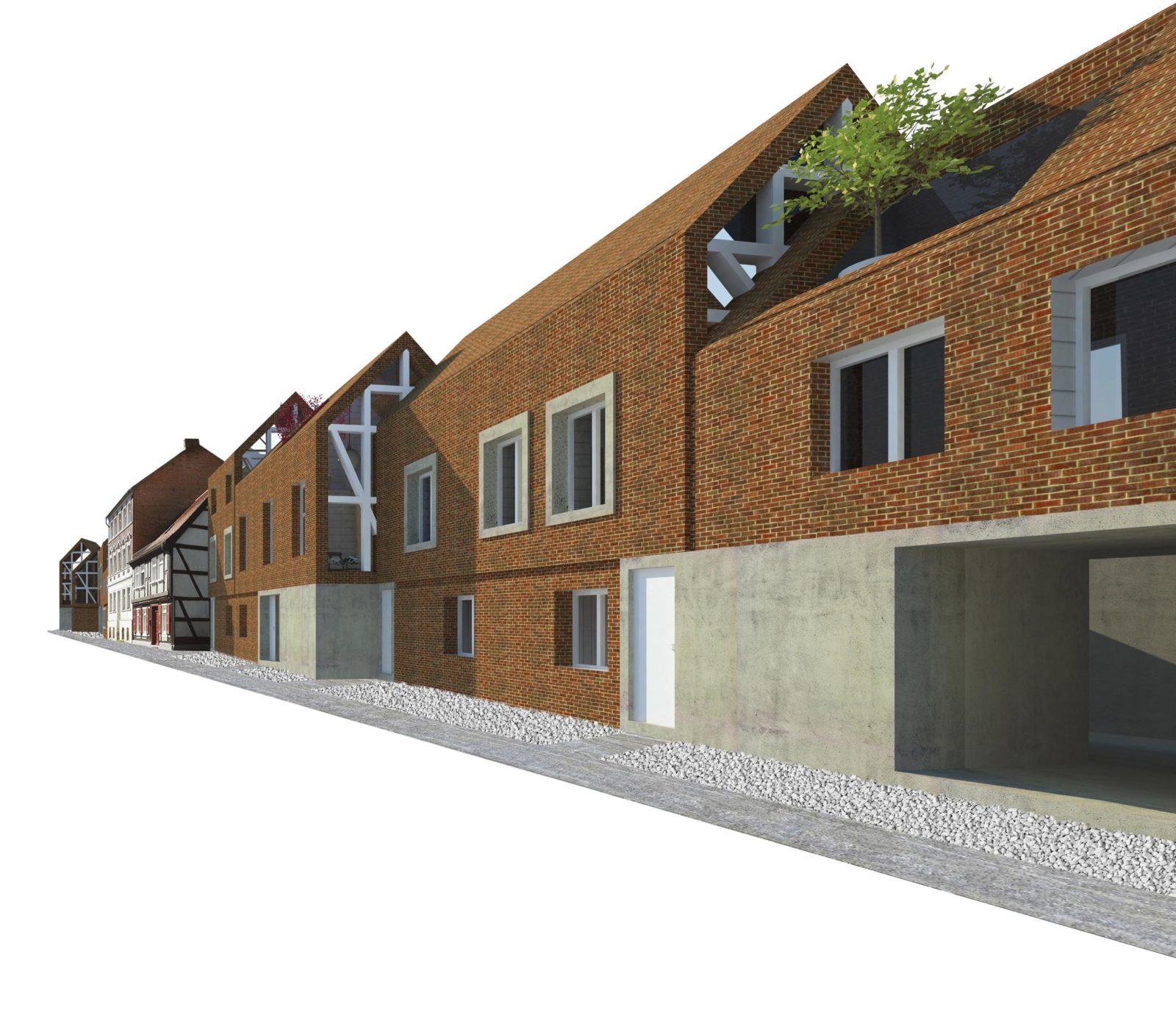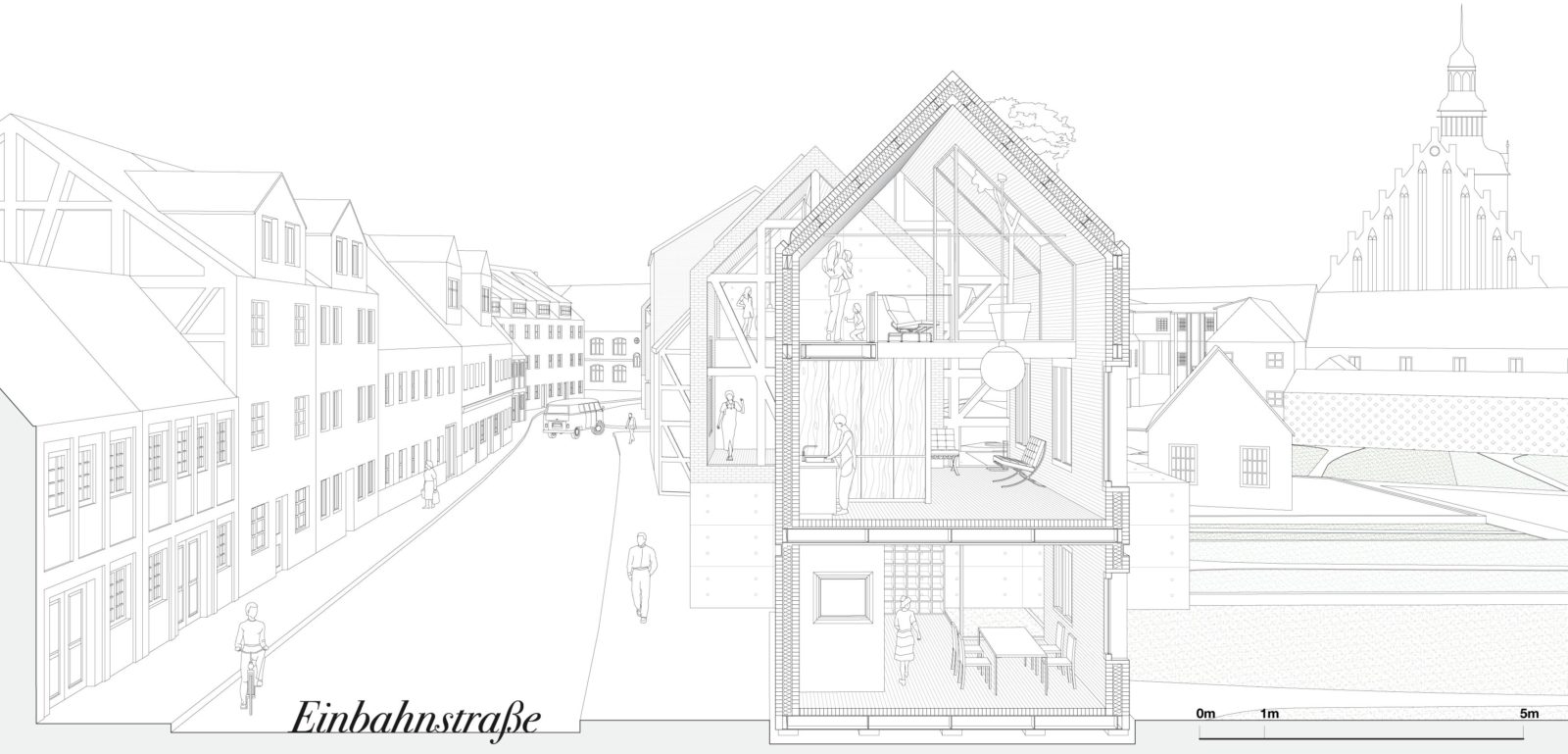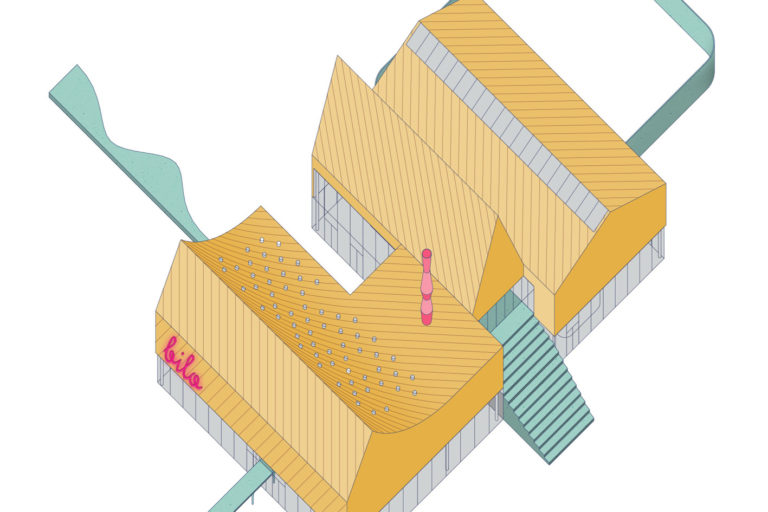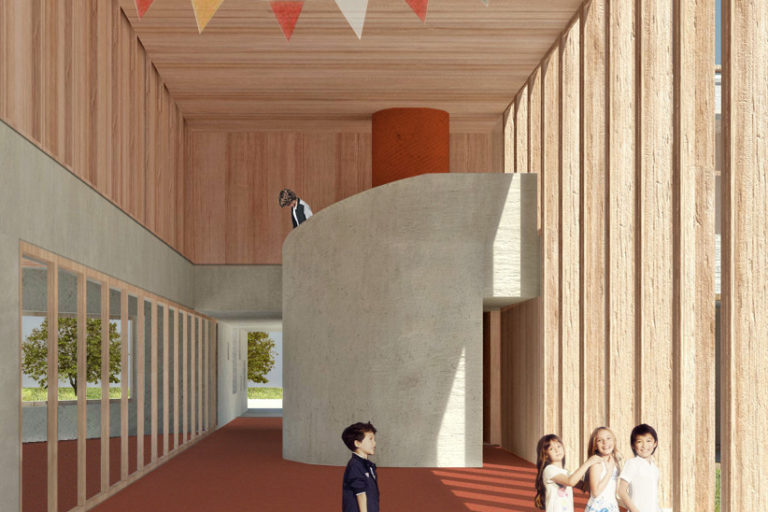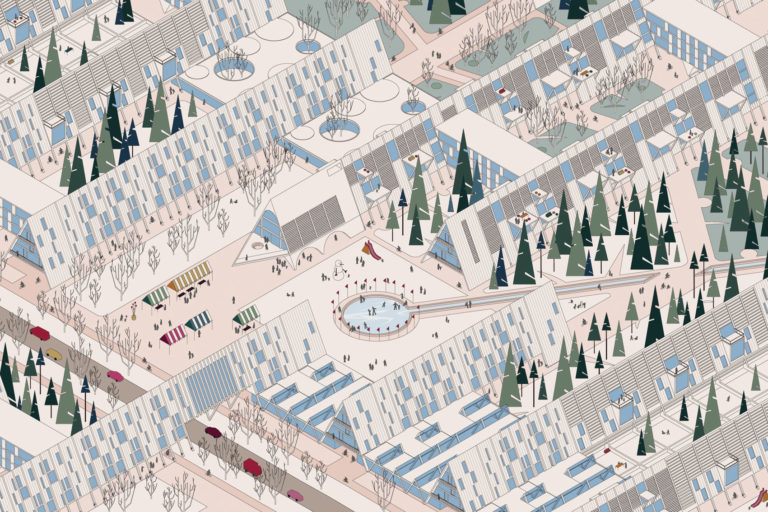Europan 11
Einbahnstraße
A city history is like a one way street (einbahnstraße): you can keep traditional forms, but you have to change the way one uses them. If you don’t regenerate the city with new spaces and technologies, you will create a fake city. If you don’t deal with the pre-existing architectural and urban forms, you will loose the identity of the city and you will produce a inept architecture. These three projects interact with the existing buildings on the sites as well as the traditional building typologies around, changing their use and perception thanks to new physical or visual links. These links are either formed with an architectural element or hollow space. For instance, the reticular structure transforms the old train station and maintenance facilities into a unique entity (“kulturforum”). However the two others are public spaces that link different types of urban entities which were originally separated from each other.

Landscape
Wittstock urban shape is clear and unspoiled thanks to the green belt around the old walls. This belt is an important heritage, that each urban project had to deal with. The old railways tracks become a linear park, connecting the former station complex to the Thirty Years War Museum. This park crosses the green belt and their intersection generates a public open space that we called “events esplanade”. This new green “platz” perspectively ends in front of the former railways warehouse curved façade and it is a sort of public and modern twin of the old Amtshof. Also the housing projects in Werderstrasse and Kyritzer Strasse deal with green spaces: many dwellings have a private green loggia and each complex faces on a public court that is a collective garden.
Location: Wittstock, Germany
Year: 2011
With: Michela Milanese

